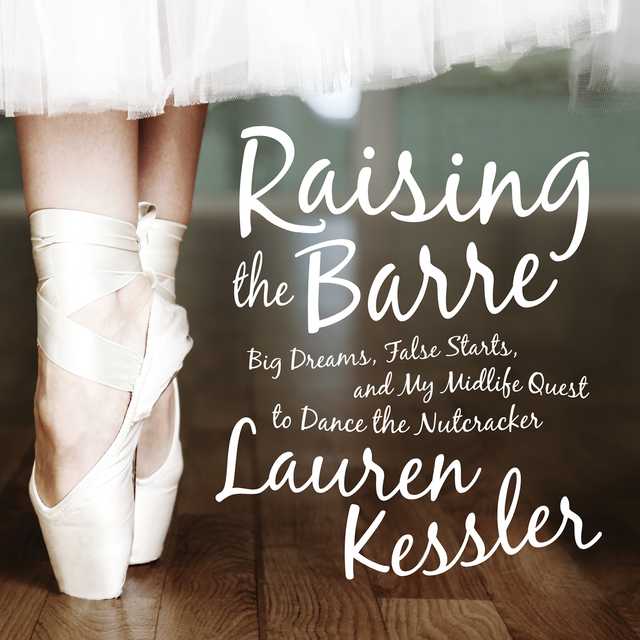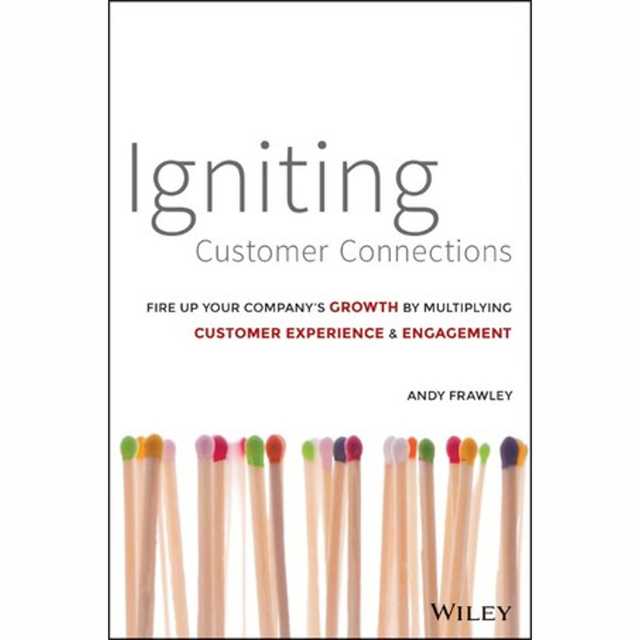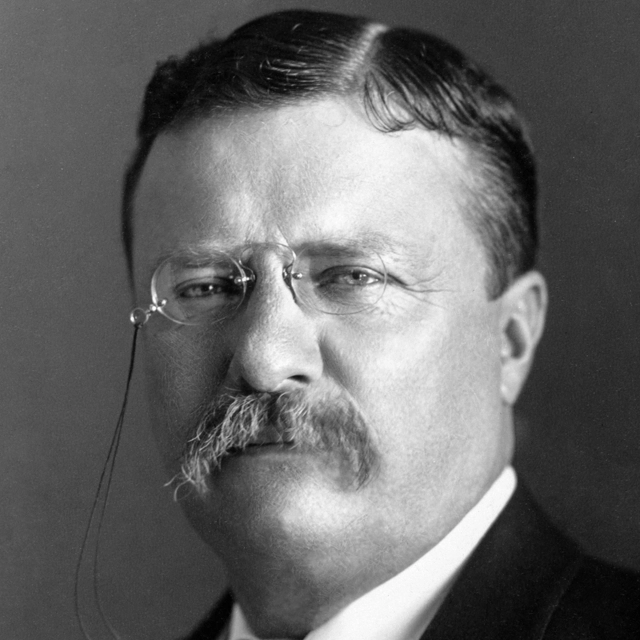The 22 Immutable Laws of Branding Audiobook Summary
This marketing classic has been expanded to include new commentary, new illustrations, and a bonus book: The 11 Immutable Laws of Internet Branding
Smart and accessible, The 22 Immutable Laws of Branding is the definitive text on branding, pairing anecdotes about some of the best brands in the world, like Rolex, Volvo, and Heineken, with the signature savvy of marketing gurus Al and Laura Ries. Combining The 22 Immutable Laws of Branding and The 11 Immutable Laws of Internet Branding, this book proclaims that the only way to stand out in today’s marketplace is to build your product or service into a brand–and provides the step-by-step instructions you need to do so.
The 22 Immutable Laws of Branding also tackles one of the most challenging marketing problems today: branding on the Web. The Rieses divulge the controversial and counterintuitive strategies and secrets that both small and large companies have used to establish internet brands. The 22 Immutable Laws of Branding is the essential primer on building a category-dominating, world-class brand.
Other Top Audiobooks
The 22 Immutable Laws of Branding Audiobook Narrator
David Drummond is the narrator of The 22 Immutable Laws of Branding audiobook that was written by Al Ries
Al Ries and his daughter and business partner Laura Ries are two of the world’s best-known marketing consultants, and their firm, Ries & Ries, works with many Fortune 500 companies. They are the authors of The 22 Immutable Laws of Branding and The Fall of Advertising and the Rise of PR, which was a Wall Street Journal and a BusinessWeek bestseller, and, most recently, The Origin of Brands. Al was recently named one of the Top 10 Business Gurus by the Marketing Executives Networking Group. Laura is a frequent television commentator and has appeared on the Fox News and Fox Business Channels, CNN, CNBC, PBS, ABC, CBS, and others. Their Web site (Ries.com) has some simple tests that will help you determine whether you are a left brainer or a right brainer.
About the Author(s) of The 22 Immutable Laws of Branding
Al Ries is the author of The 22 Immutable Laws of Branding
More From the Same
The 22 Immutable Laws of Branding Full Details
| Narrator | David Drummond |
| Length | 8 hours 8 minutes |
| Author | Al Ries |
| Category | |
| Publisher | HarperAudio |
| Release date | April 22, 2014 |
| ISBN | 9780062351418 |
Subjects
The publisher of the The 22 Immutable Laws of Branding is HarperAudio. includes the following subjects: The BISAC Subject Code is Business & Economics, International, Marketing
Additional info
The publisher of the The 22 Immutable Laws of Branding is HarperAudio. The imprint is HarperAudio. It is supplied by HarperAudio. The ISBN-13 is 9780062351418.
Global Availability
This book is only available in the United States.
Goodreads Reviews
Charlie
August 04, 2009
Truth to tell, there isn’t really 22 laws but just 2 laws. The first law is to maintain uniqueness, remain focus with your message by being consistent, and don’t muddle your message by trying to become “everything” to everyone. The second law is that a 100% domination of the market is impossible because not everybody has the same need and thus wouldn’t equally appeal to your brand message and purchase your product. If you get 50% + 1 market share, be happy and move on and create another brand. The remaining 20 laws are just rewording of the 2 basic laws. If you have too much time to kill, be my guess and read the book. It ain’t a boring read anyway just repetitive.
David
October 20, 2014
11 chapters of genius followed by 11 chapters of not geniusthe first part of the book gives great insight into human psychology. if you're launching a new product or struggling with growth it's worth a read. The following 11 chapters, however, reveal that the authors are not prescient. in my opinion, the authors fail to recognize the inevitable consequence of their prescribed strategy. namely, the inevitable fatigue that will occur from an excessive choice of brands. years have passed this book was first printed and we can now begin to see that consumers show an affinity for some brands that offer fully integrated solutions (ie Amazon.com.)still the book is an excellent crash course on branding. I highly recommend it.
Alejandro
September 05, 2020
This is an excellent book for anyone that wants to learn about branding. Quick and easy read, which makes it a must for any professionals working in any areas that are closely related to branding or marketing.A great complement to the 22 Immutable Laws of Marketing.Flow: 5/5, can be read in a few days. Actionability: 4/5, not many step by step instructions but there is still a lot of actionable advice. Mindset: 4/5, will change the way you think about branding.Some Of My Highlights:"Marketing is building a brand in the mind of the prospect.""Today most products and services are bought, not sold. And branding greatly facilitates this process.""Branding is simply a more efficient way to sell things.""Aim high. You can never achieve more than you aspire to.""If you want to have a successful company, you have to do what successful companies did before they were successful. As it happens, they all did the same thing. They narrowed their focus.""While a hefty advertising budget might be needed to maintain high-flying brands like McDonald's and Coca-Cola, advertising generally won't get a new brand off the ground.""When your brand can make news, it has a chance to generate publicity. And the best way to make news is to announce a new category, not a new product.""If you want to build a brand, you must focus your branding efforts on owning a word in the prospect's mind.""To get into the consumer's mind you have to sacrifice. You have to reduce the essence of your brand to a single thought or attribute. An attribute that nobody else already owns in your category.""Quality, or rather the perception of quality, resides n the mind of the buyer.""There is almost no correlation between success in the marketplace and success in comparative testing of brands - whether it be taste tests, accuracy tests, reliability tests, durability tests, or any other independent, objective third-party testing of brands.""To build a quality brand you need to narrow the focus and combine that narrow focus with a better name and a higher price.""The most efficient, most productive, most useful aspect of branding is creating a new category.""Leaders should continue to promote the category, to increase the size of the pie rather than their slice of the pie.""Leading brands should promote the category, not the brand."
Puja
January 16, 2014
I was introduced to this invaluable and concise book by Bill Anderson, professor at my alma mater (Emerson College, Boston), as a requisite for the Brand Management course I took. Long after I graduated, I found myself coming back to these pages to remind myself of the simple but effective laws prescribed in the book. I'm no longer working in marketing and business development, and the book is sitting in some cupboard, untouched for a long time. But I believe that understanding branding is important and helpful for many professions, not just marketing and sales. So I'm sure I'll end up referring to it again at some point. Whether or not you agree to labeling the guidelines as 'laws', you will definitely find this work of the Ries duo useful. The learning is transferable to most businesses or careers. Ofcourse, there are umpteen free resources on the Internet today, but there's something comforting about picking up this book with rules - it sticks with you.
Alberto
February 22, 2017
Short and sweet! If you sell anything, you must read this book. Are you a brand manager of any sort? Then you must read this book. Are you a company's executive? You must read this book. And while you are at it, keep in mind that despite the fact that the references used by the authors are now dated, the power of its content is made even more evident thanks to the fact that the reader has the benefit of hindsight.
Mark
March 08, 2009
As we are starting a new business I found this book to be very valuable to insure we defined our new company in the marketplace.
Michelle
December 09, 2016
Changed everything. I learned so much from this. Lots of what is said, you will have heard before but it's very well laid out and explained here.
Nicolas Marino
October 19, 2019
This book is outstanding and mostly everything written stays 100% relevant. However, the internet half of it is in need of a very serious update. For example, It's very bizarre to be reading in 2019, about the huge success Yahoo! is as a company, just to name one incredibly outdated case. In addition, the internet and smartphones since the advent of the iPhone in 2007 have changed life so dramatically that this sole fact renders not a few of the statements in the internet part of the book either inaccurate or plain wrong. Smartphones alone and the way we use them today proved most of "10- Law of divergence" wrong. Also the advent of streaming media services like Netflix has made some of the statements contained in these immutable laws, mutable in one way or another at least. I would be fascinated to read an update to see how the authours feel today about those bits and pieces that they weren't able to foresee when they wrote this version of it. That being said the book is exceptional and a must read.
Ryan
January 30, 2018
A lightning quick glimpse at some simple, and profound concepts in the world of Branding. The book is clear and concise throughout, and written in plain English. The author presents a new concept per chapter, and provides tons of real-world examples of companies carrying out various branding plans. Although written in 1998, the ideas are timeless, and can still be seen at play in modern businesses. The author is astute in his analysis of the branding strategies that he touches upon, and extremely trenchant in underlining the significance of those strategies. As a side note, it's interesting to see how some of the companies mentioned in this book have pivoted in the decades since. In any event, this is definitely a solid read for those interested in the subject of Branding. Tons of knowledge in one, tiny book.
Groot
July 08, 2022
Loss of a star because it's clearly dated, but not as much as you'd expect for being over 20 years old. Their insights (father-daughter team) are excellent. I took a lot of notes.They were too pessimistic, too often, but better than being cheerleaders for any passing fad. AOL, Yahoo, etc., were still unbeatable. They didn't think it wise for Amazon to expand beyond selling books. They thought that over-focus on convergence was misplaced -- then the smartphone revolution occurred.Prediction is hard, though, and they specialize in marketing and branding insights, and there are plenty of them.
Omar M.
December 31, 2016
Al Ries is the father of brand positioning, so when he and his daughter came out with this book I had to get. IIt builds on some of the foundation found in the immutable laws of marketing, but it adds a new dynamic with pictures and cases studies. I have used this book (and the case studies) to deploy strategies and also educate clients about why we take certain routes for their marketing. One example is that the birth of a brand happens through publicity/PR, and the rise of it and protection of position is accomplished through marketing. Definitely a classic to have.
Tony
August 18, 2017
A good book, a bit old, it has some dated examples, but it's still good, very objective and to the point, I realize how many things influence a brands feel, being a designer of course I didn't like the part where it talks about logotypes being more effective if they are words and not images, it uses mobil as an example but being honest mobil is one of those logos that look really old but it's just there so you accept it, it's not because "it transcended the test of time". Still good book. Recommend it.
Dani
March 04, 2019
I read an older version but the laws aren't old. We can still apply in current situations. The laws were explained carefully and thoughtfully with lots of practical examples from big brands. The book showed both the negative and positive sides of strategies of some popular brands. It was not very hard to understand and imagine what was happening in the past and led to the present.A useful book for me and the others who would love to learn and get basic knowledge about building brands.
Duchess_Nimue
June 21, 2020
Quite similar to The 22 Immutable Laws of Marketing: Violate Them at Your Own Risk. Most advices are repeated, but have different names. It's a quick and easy read. Those laws are good to keep in mind.
Alan
January 01, 2017
Useful read. Offers a nuanced perspective as opposed to generic information.1. The Law of Expansion - the power of a brand is inversely proportional to its scope2. The Law of Contraction - a brand becomes stronger when you narrow its focus. Limit line extensions3. The Law of Publicity - the birth of a brand (startup phase) is achieved with publicity, NOT advertising4. The Law of Advertising - once born, a brand needs advertising to stay healthy. Don't say you have a "better" product because consumers think "that's what they all say." Say that yours is the "leader" in the category5. The Law of the Word - a brand should strive to own a word in the mind of the consumer. Component of mindshare branding. Douglas Holt argues this form of branding is inferior to cultural branding. 6. The Law of Credentials - the crucial ingredient in the success of any brand is its claim to authenticity. Consumers of dubious of people claiming to be experts. Leadership is the most direct way to establish credentials, and best way to gain leadership as a new brand is to create a new category. 7. The Law of Quality - quality is important, but brands are not built by quality alone. They are built by the PERCEPTION of quality8. The Law of the Category - a leading brand should promote the category, not the brand. Consumers don't think they need a particular brand, they think a certain type of product and service (the category) then make purchase accordingly. Don't expect to sustain more than 50% market share of a category9. The Law of the Name - in the long run a brand is nothing more than a name. In the short term a brand needs a unique idea or concept to survive. This is weakness of conglomerate brands like Mitsubishi, Mitsui, and Hyundai. They are stretched so thin and involved in so many industries using the same name that they are making everything except money.10. The Law of Extensions - the easiest way to destroy a brand is to put its name on everything. Many times doing this will weaken your core product (example - Campbell's Healthy Request soup. So is Campbell's regular soup not healthy?)11. The Law of Fellowship - in order to build the category, a brand should welcome other brands. Usually the best is for 2 major competitors to exist in each category, and the competition will drive publicity of the whole category. As an aside - best location for Burger King franchise is nearby a McDonald's restaurant because it attracts people with interest in fast food to the same location. 12. The Law of the Generic - one of the fastest routes to failure is giving a brand a generic name. Some companies (General Electric, General Motors) are still successful but this is in spite of their name. They were the first in their respective marketplace. At that time the market was full of commodities so big, generic names were used to differentiate against smaller competitors. Today in the long tail economy, things are very different.13. The Law of the Company - Brands are brands, companies are companies. The brand itself should be focus of consumer's attention (like Tide by P&G). If company name must be used, make sure it is presented in a secondary position. 14. The Law of Sub-brands - what branding builds, sub-branding can destroy. Create a new name and brand instead of stretching your existing brand into a different market where it will be at a disadvantage and drag down perception of the original product.15. The Law of Siblings - sometimes a second brand (in same category) can strengthen a company's market share. Make sure each sibling brand has unique name and identity, and caters to different target market within the same category. Best would be to choose a single attribute to segment (often this is price)16. The Law of Shape - a brand's logo should be designed to fit the eyes. This means optimally it should be horizontal shape 1 unit tall and 2.25 units wide. Use legible font and make sure to show the brand name (as opposed to just a symbol or design)17. The Law of Color - a brand should use a color that is the opposite of its major competitors 18. The Law of Borders - there are no barriers to global branding. Make sure the brand name works when read in English. 19. The Law of Consistency - a brand is not built overnight. Success is measured in decades, not years. Do not deviate from core identity because you're bored, or because you have the resources to, or even because the market is moving in a different direction. To follow the market, create a new brand if need be. 20. The Law of Change - brands should only be changed if it's weak or nonexistent in the mind, if you want to move your brand lower on value chain (this is still tricky but definitely better than trying to move up the value chain i.e. create a luxury extension of a bargain brand), and your brand is in a slow-moving field and change is going to be gradual. 21. The Law of Mortality - no brand will live forever. Just like life. If the market is moving in a new direction, often times you need a new brand to be a winner. 22. The Law of Singularity - the most important aspect of a brand is its single-mindedness.*Caveat - keep in mind the authors were marketing consultants who mainly worked for large Fortune 500 clients. Their advice may not perfectly apply to start up, small brands. Also, this book was written back in 1998
Most Popular Audiobooks
Frequently asked questions
Listening to audiobooks not only easy, it is also very convenient. You can listen to audiobooks on almost every device. From your laptop to your smart phone or even a smart speaker like Apple HomePod or even Alexa. Here’s how you can get started listening to audiobooks.
- 1. Download your favorite audiobook app such as Speechify.
- 2. Sign up for an account.
- 3. Browse the library for the best audiobooks and select the first one for free
- 4. Download the audiobook file to your device
- 5. Open the Speechify audiobook app and select the audiobook you want to listen to.
- 6. Adjust the playback speed and other settings to your preference.
- 7. Press play and enjoy!
While you can listen to the bestsellers on almost any device, and preferences may vary, generally smart phones are offer the most convenience factor. You could be working out, grocery shopping, or even watching your dog in the dog park on a Saturday morning.
However, most audiobook apps work across multiple devices so you can pick up that riveting new Stephen King book you started at the dog park, back on your laptop when you get back home.
Speechify is one of the best apps for audiobooks. The pricing structure is the most competitive in the market and the app is easy to use. It features the best sellers and award winning authors. Listen to your favorite books or discover new ones and listen to real voice actors read to you. Getting started is easy, the first book is free.
Research showcasing the brain health benefits of reading on a regular basis is wide-ranging and undeniable. However, research comparing the benefits of reading vs listening is much more sparse. According to professor of psychology and author Dr. Kristen Willeumier, though, there is good reason to believe that the reading experience provided by audiobooks offers many of the same brain benefits as reading a physical book.
Audiobooks are recordings of books that are read aloud by a professional voice actor. The recordings are typically available for purchase and download in digital formats such as MP3, WMA, or AAC. They can also be streamed from online services like Speechify, Audible, AppleBooks, or Spotify.
You simply download the app onto your smart phone, create your account, and in Speechify, you can choose your first book, from our vast library of best-sellers and classics, to read for free.
Audiobooks, like real books can add up over time. Here’s where you can listen to audiobooks for free. Speechify let’s you read your first best seller for free. Apart from that, we have a vast selection of free audiobooks that you can enjoy. Get the same rich experience no matter if the book was free or not.
It depends. Yes, there are free audiobooks and paid audiobooks. Speechify offers a blend of both!
It varies. The easiest way depends on a few things. The app and service you use, which device, and platform. Speechify is the easiest way to listen to audiobooks. Downloading the app is quick. It is not a large app and does not eat up space on your iPhone or Android device.
Listening to audiobooks on your smart phone, with Speechify, is the easiest way to listen to audiobooks.






























